There are 14 main types of Jasmine flowers.
Most flowers of this species are white in color, although you do get some that bloom in yellow too.
Let’s now take a look at them.
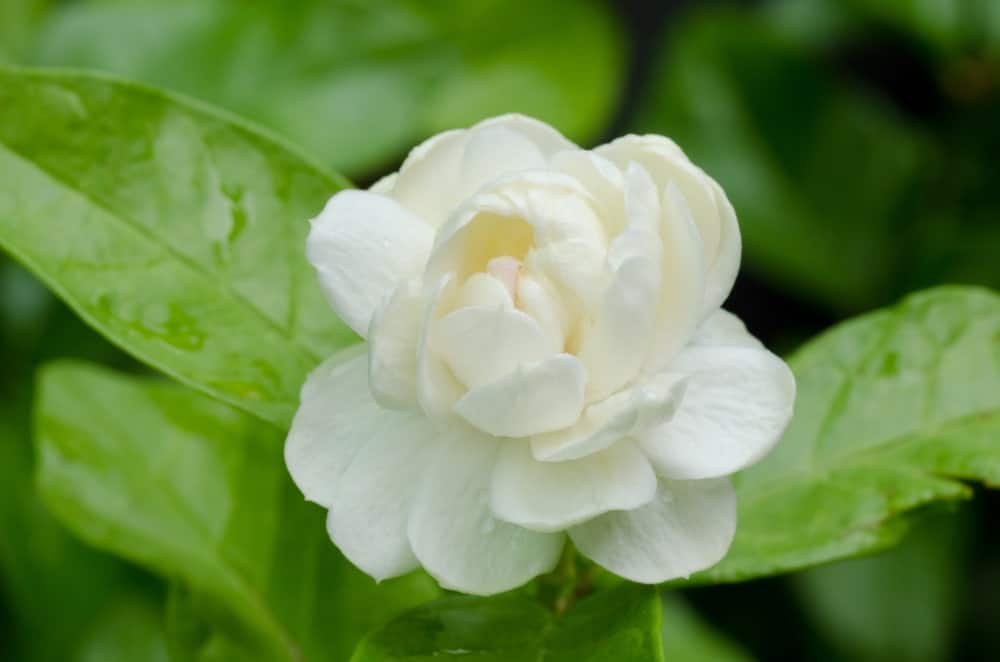
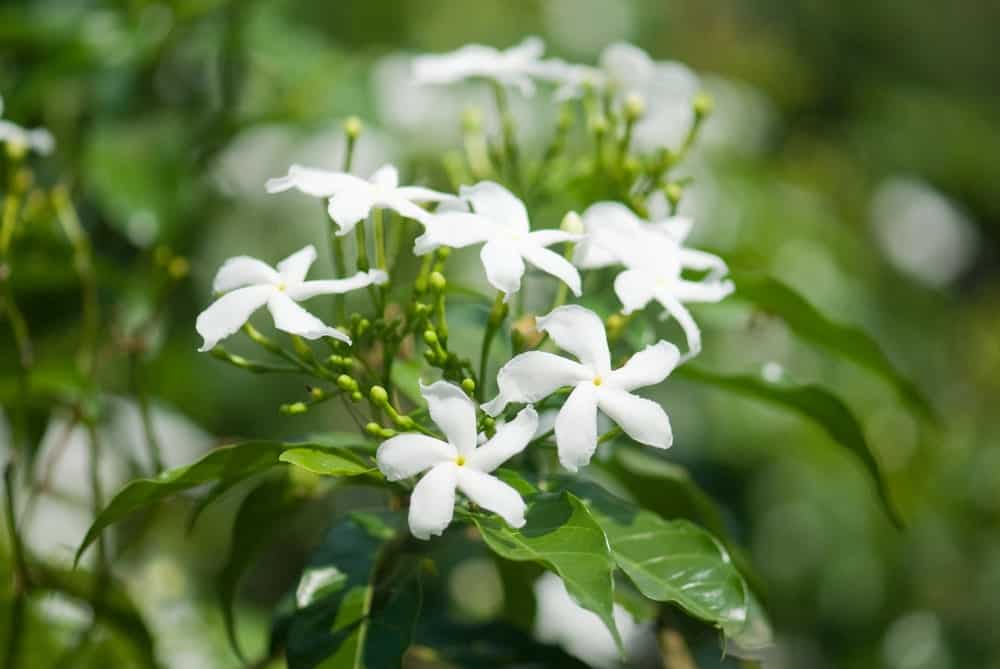
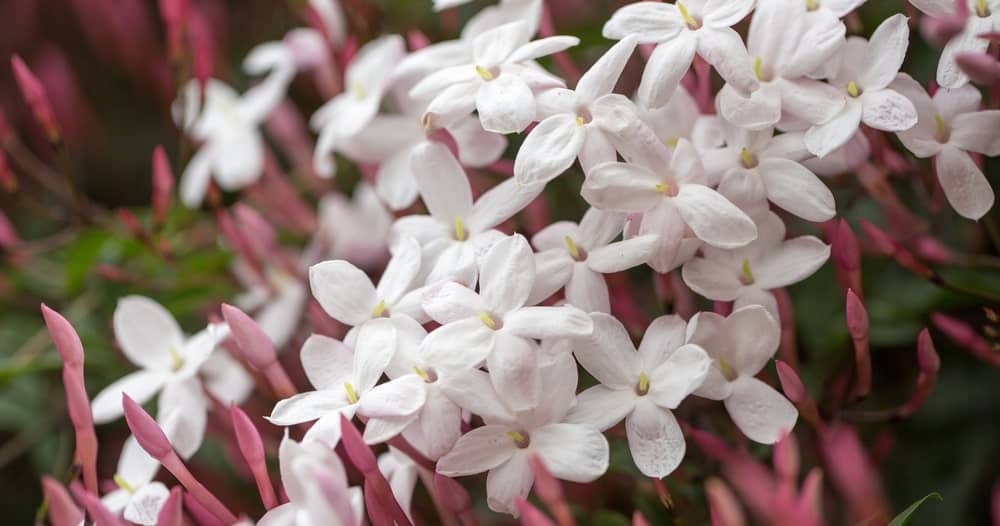
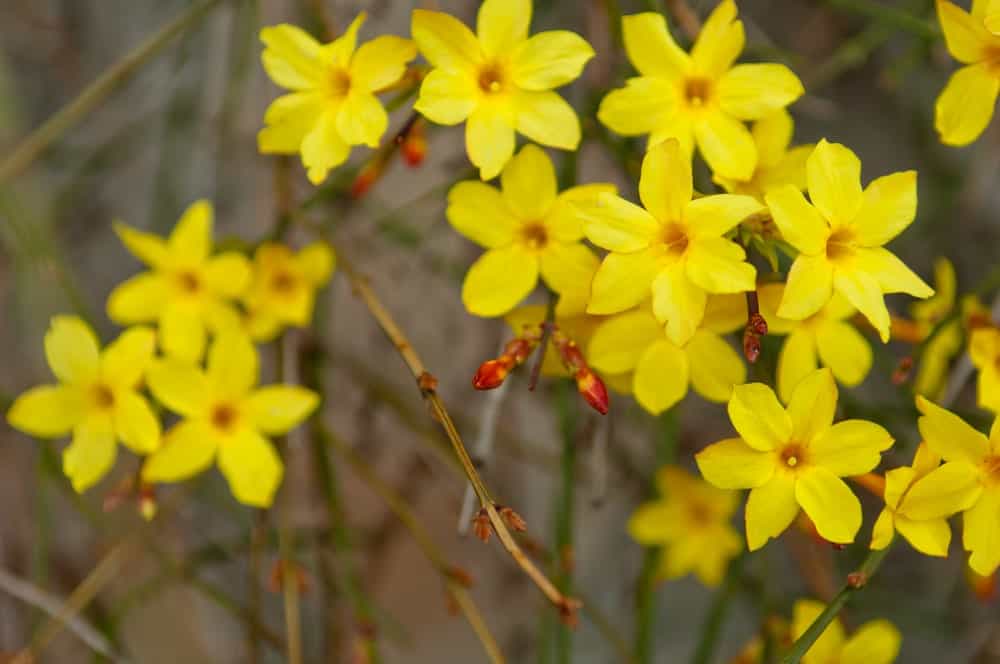
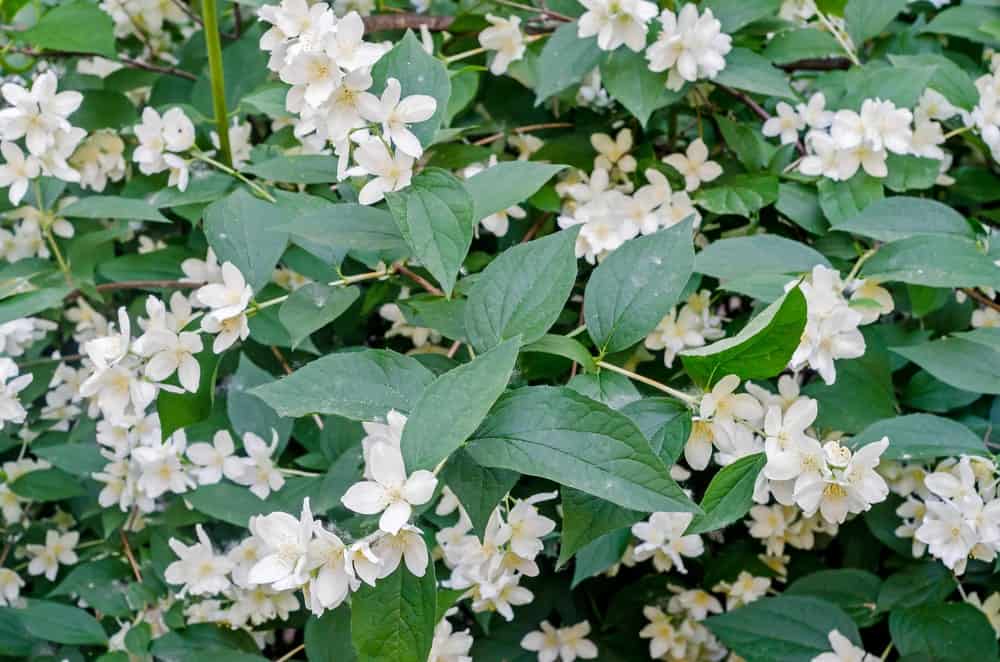

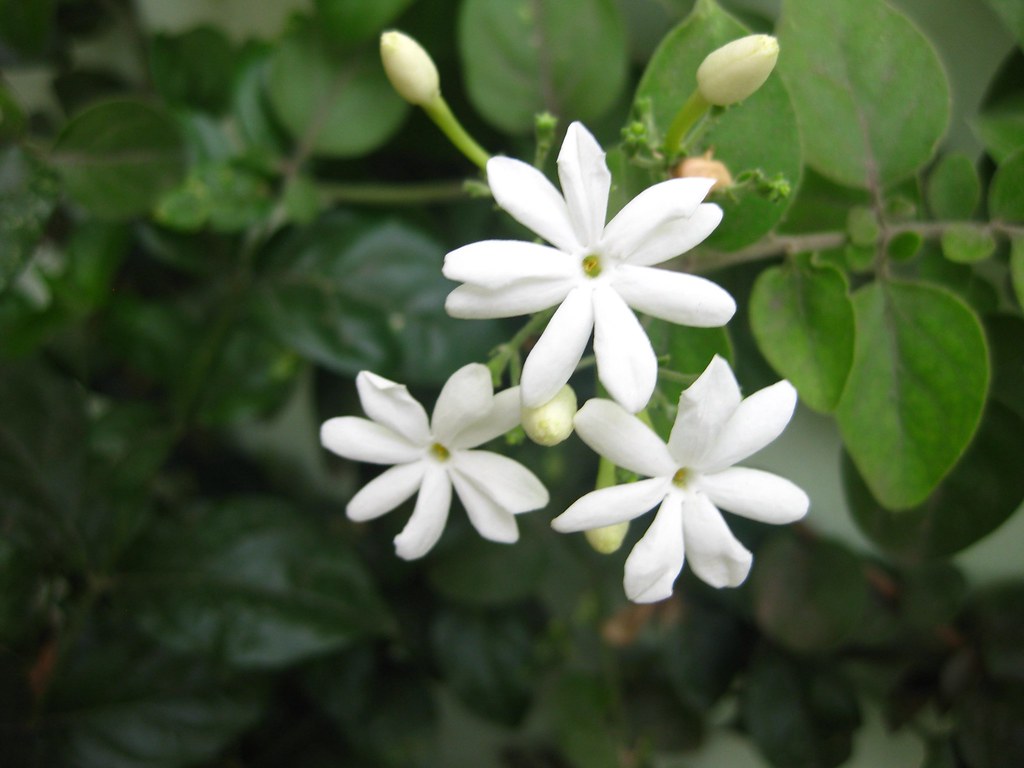
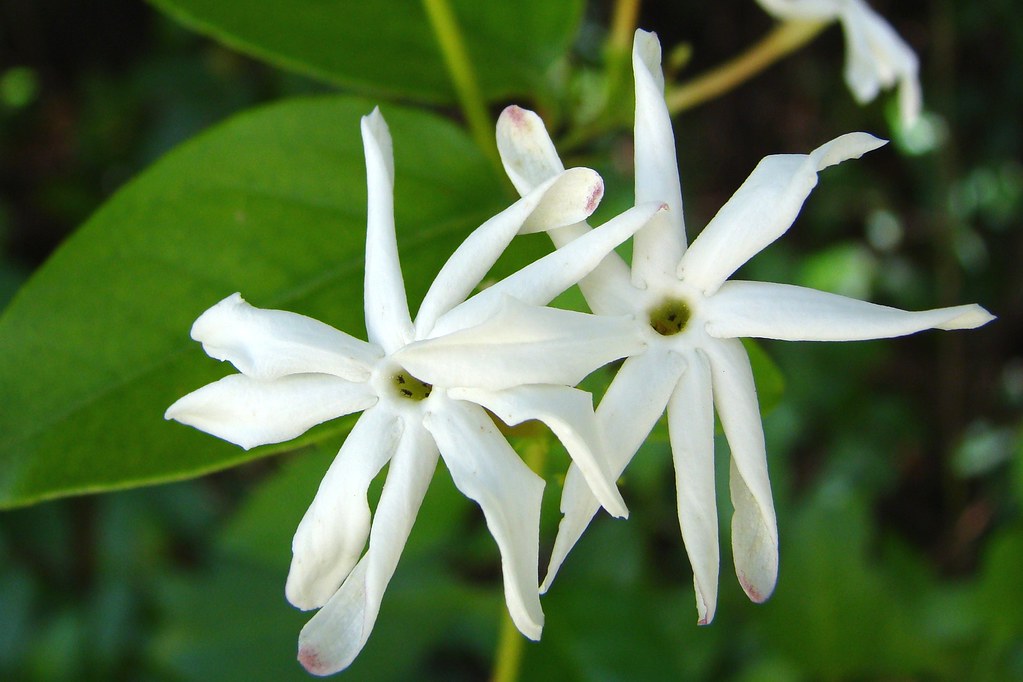

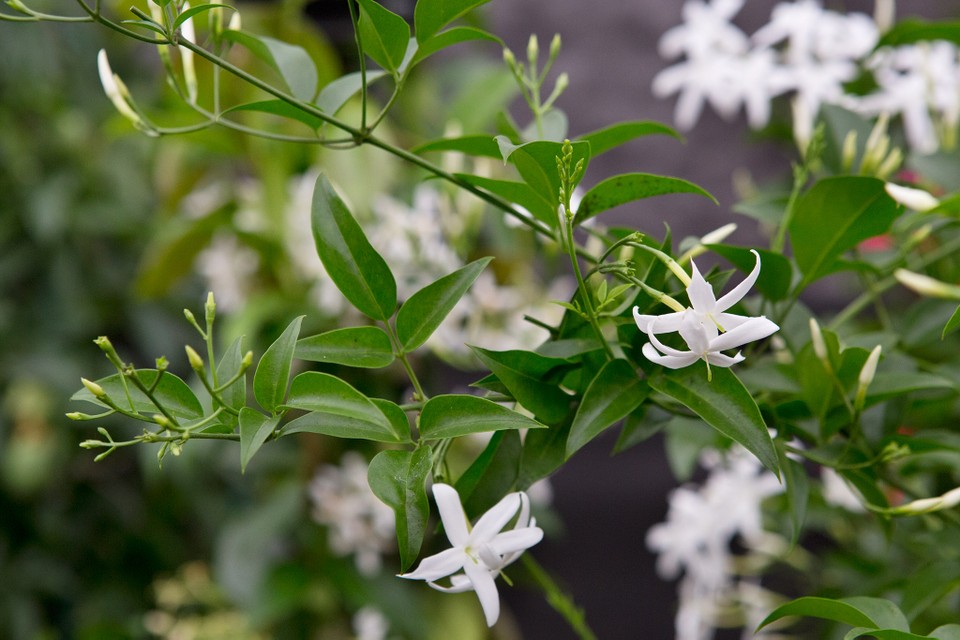
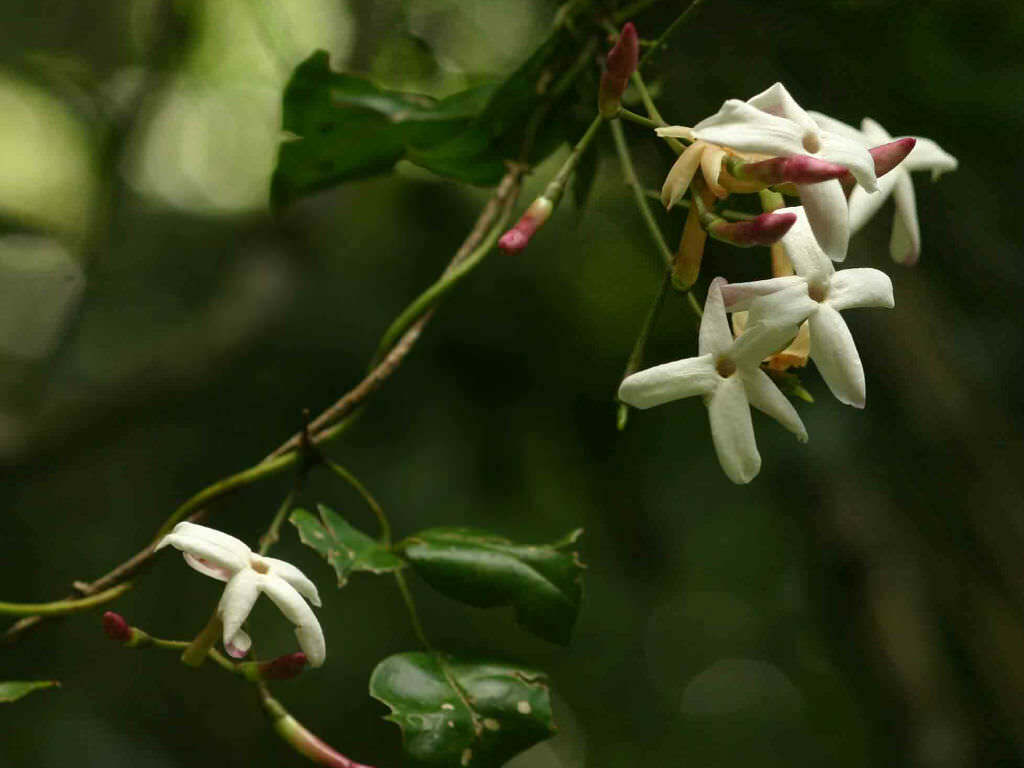
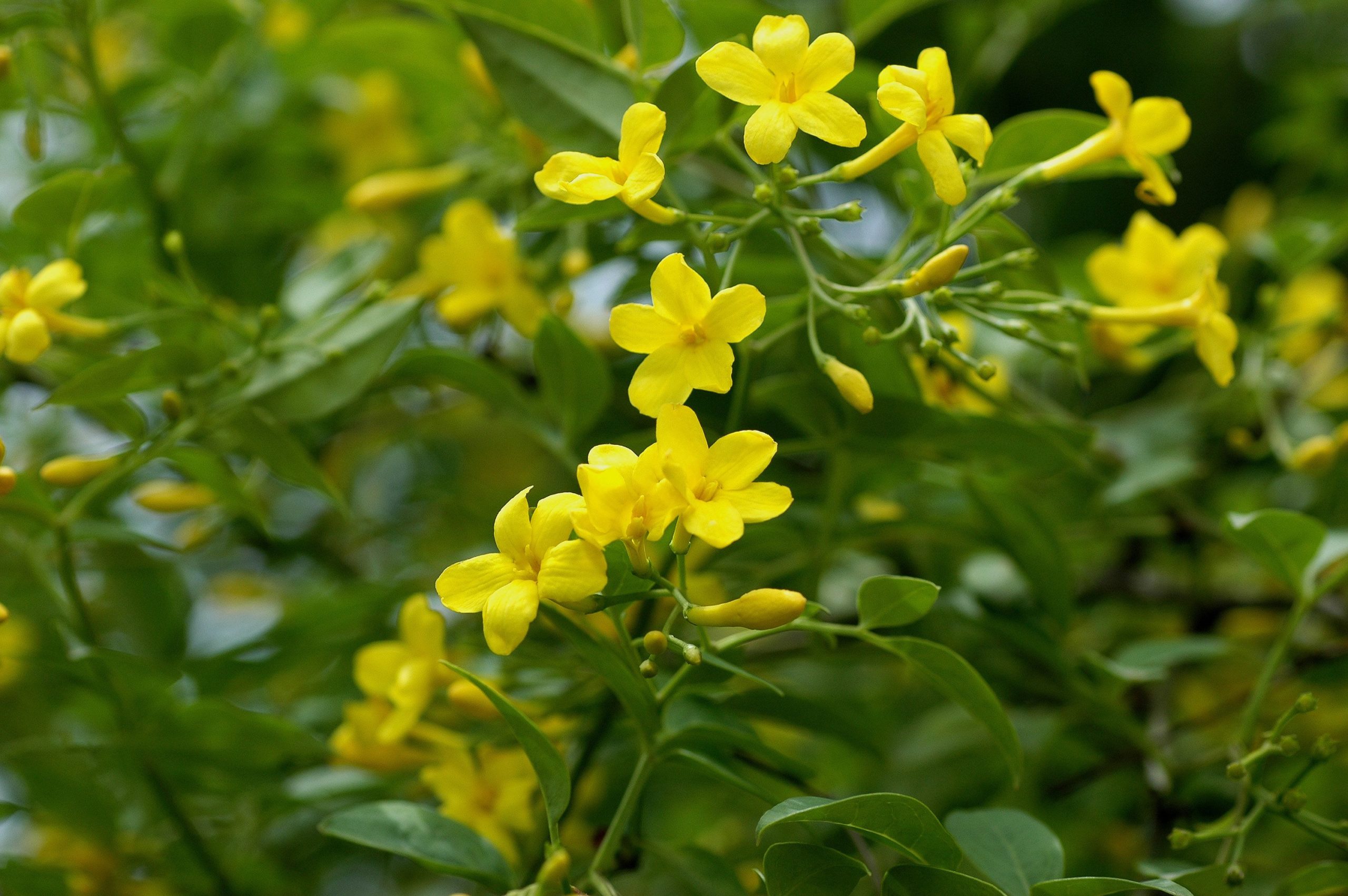
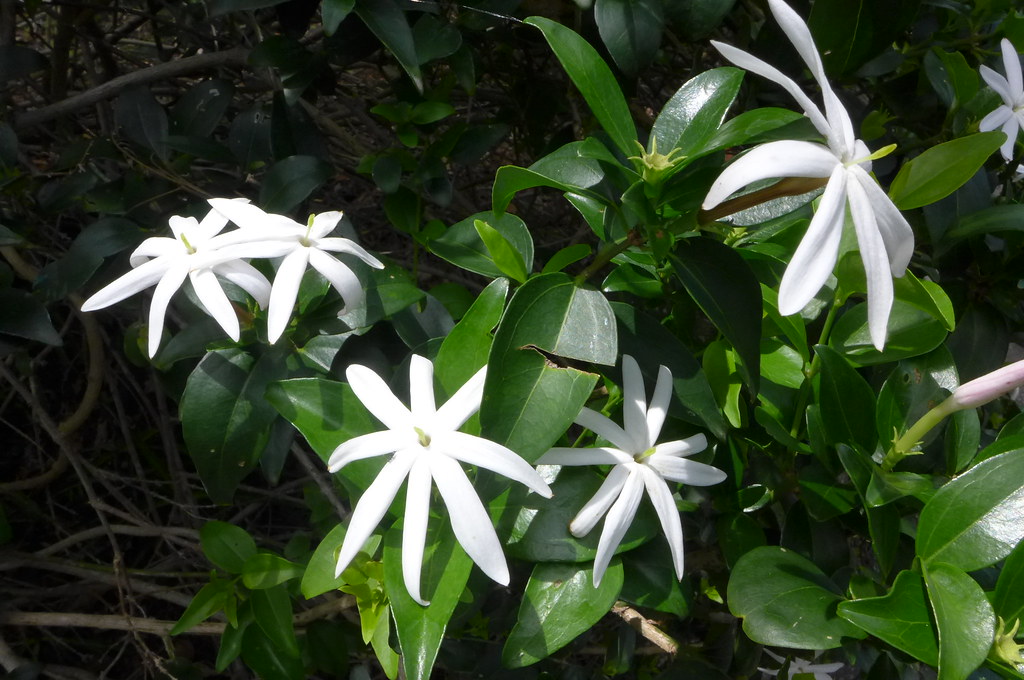
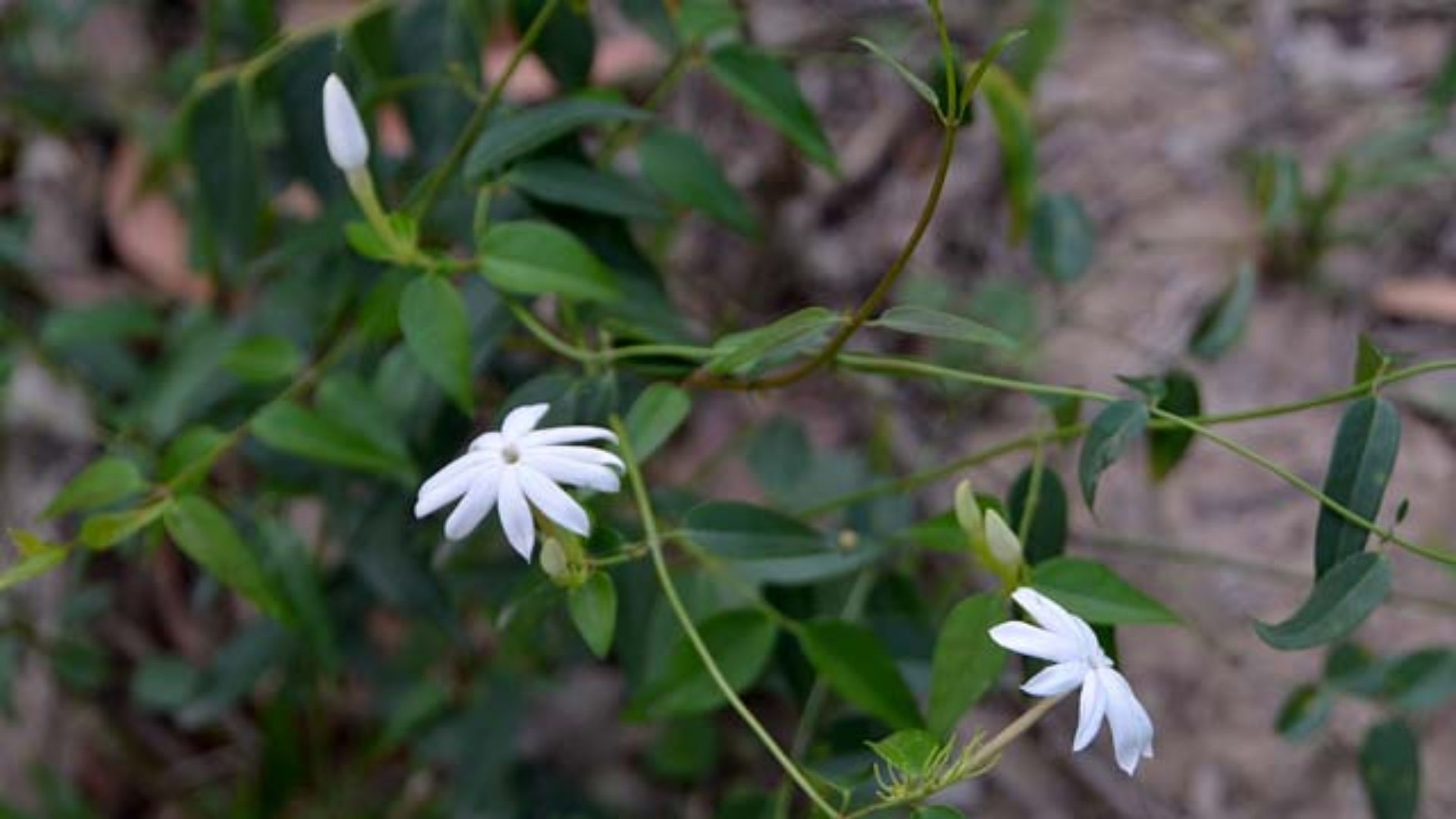
Jasmines originated in the Himalayas near western China.
They have five or six lobes and are often sweet to smell. They are also one of the most popular flower names that start with J.
What Are The Different Jasmine Types?
The main jasmine plant lower classifications are:
Arabian Jasmine
Though it’s called the Arabian Jasmine, it’s not originally native to Arabia. Jasminum sambac, as it’s known in the scientific community, is native to Asia.
It’s an evergreen shrub that has simple leaves and clusters of particularly fragrant white flowers that generally measure 2.5cm across.
They blossom mostly in summer, although can do so at other times during the year if the conditions are right.

Common Jasmine
Common Jasmine is a sweet-smelling flowering plant that blooms throughout summer and fall.
It’s also known as Jasminum officinale and is the national flower of Pakistan.
It is a big deciduous climbing shrub, that typically has between 7-9 leaves shaped ovally.
The white flowers are scented and generally measure around 2cm in width.

White Jasmine
Jasminum polyanthum, which also goes by the name pink jasmine or white jasmine, is known to grow up to 20 feet in height.
These are commonly kept as house plants and are very popular due to their sweetly scented flowers which tend to bloom around June to August.
They tend to grow best in a sheltered, yet sunny location.

Winter Jasmine
Jasminum nudiflorum, otherwise known as the winter jasmine, is very much like white Jasmine in appearance but instead has yellow flowers.
It is considered to be medium in size yet has long, arching branches.
Flowers only typically grow to 2.5cm in width, and blossom both in the spring and again in the winter.

Jasminum Grandiflorum
Featuring white flowers that hold a sweet smell.
Other names this flower goes by including Spanish jasmine, Royal jasmine, and Catalan jasmine.
Otherwise known as the white fragrant flower, it is widely cultivated as an ornamental plant. It typically flowers between 5-6 months following planting.

Star Jasmine
Star jasmine is a fragrant, evergreen climber that complements a wall, fence, or trellis nicely.
With a fresh scent it makes it ideal for planting near seating areas.It’s known to grow quite slowly and does best in a sunny location.
Although, a little bit of shade shouldn’t hinder its growth.
Star jasmine blooms to the extent where it can be completely covered in its own flowers.

Wild Jasmine
Jasminum angulare is a climbing shrub that possesses sweet-smelling white blooms that blossom during the summer months.
This plant is popular as an ornamental in gardens, and it tends to grow best in the direct sun or in semi-shade.
While they take a while to grow, the flowers are highly fragrant when they do bear through.
It is generally a small shrub that will only grow up to 1m, at most.

Jasminum Azoricum
Otherwise known as the lemon-scented jasmine.
This jasmine blossoms with white star-shaped flowers on a backdrop of lemon-green foliage.
It is an evergreen shrub that will typically grow to around 3m in height. Flowers are somewhat small at 2.5cm in width.

Jasminum Abyssinicum
This jasmine plant is also known as the forest jasmine due to the fact that it grows in high-altitude forests, at peak heights on the canopies.
It blossoms in white, pink, or yellow star-shaped flowers, which often are fragrant and pleasant to smell.

Jasminum Auriculatum
Jasminum auriculatum is a species of jasmine native to India.
This jasmine is predominantly grown for its essential oils, but also for decorative purposes.

Jasminum Humile
Jasminum humile, otherwise known as the Italian or yellow jasmine.
It is a semi-evergreen shrub that produces clusters of brilliant yellow, fragrant flowers that you can expect during the late spring to early fall.
It does well on a variety and range of soil types, but they must all be well-drained in order for this plant to thrive.

Jasminum Subtriplinerve
Jasminum subtriplinerve is predominantly cultivated for the leaves which are turned into a drink in its native Vietnam.

Jasminum Multipartitum
Jasminum multipartitum, otherwise known as the starry wild jasmine, is known for its white star-shaped flowers that carry a pleasant scent (primarily in the evening hours).
As such, the flowers attract a number of different species of birds.
Although this jasmine variety is ideal for indoor growing – such as in a conservatory or even an ornamental greenhouse.

Jasminum Dichotomum
Jasminium dichotomum, the Gold Coast jasmine, opens its flowers at night.
Star-shaped and Initially pink, they will slowly transform to white.

References:
- Top 25 Most Beautiful Jasmine Flowers – Stylecraze –https://www.stylecraze.com/articles/most-beautiful-jasmine-flowers/
- The 10 Best Smelling Plants for Your Garden – The Spruce –https://www.thespruce.com/best-smelling-plants-for-your-garden-2736754
- Jasmine: How to Grow Indoors | The Old Farmer’s Almanac –https://www.almanac.com/plant/jasmine
- jasmine | Description, Major Species, & Facts | Britannica – https://www.britannica.com/plant/jasmine-plant

